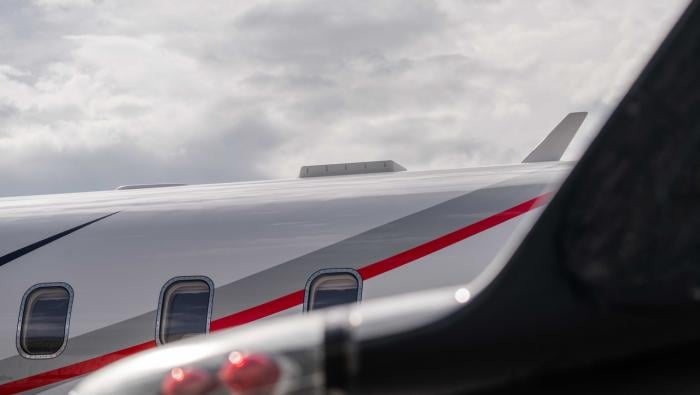December is the month that aviation honors the Wright brothers for their contributions to aviation, and we certainly all owe them for what they accomplished. However, there was another person at Kitty Hawk who made a great contribution toward powered flight. Lest he be forgotten, I thought a little history would help inform those who might not be aware of Charles Taylor and his many accomplishments.
Before the last decade of the 20th century, not many aviation mechanics had ever heard of Taylor, the man who built the first aircraft engine for the Wright brothers. His name finally became part of our aviation maintenance vocabulary after the FAA named the Master Mechanic Award after him in 1993. Even today, mechanics know his name only because it is attached to a single, major accomplishment in aviation, but we remain ignorant of the man’s other accomplishments.
To lift this veil, I would like to present a brief history–based on H.R. DuFour’s book, Charles Taylor, The Wright Brothers’ Mechanician–of the first aircraft mechanic’s life and his other accomplishments in the hope that aviation maintenance technician schools, trade organizations, pilots and mechanics will have a greater understanding of his accomplishments and keep his and other master mechanics’ accomplishments alive in the written and oral tradition of our profession.
Taylor was born on May 24, 1868, a few miles east of Decatur, Ill. When he was 10, his family moved to Lincoln, Neb., after hog cholera wiped out their farm. In 1880, after finishing seventh grade, Taylor quit school to work for the Nebraska State Journal as an errand boy. He returned to school to graduate from Lincoln high school in 1887. After graduation, Taylor spent several months working with a surveyor who was laying out the city of Los Angeles.
Machine-shop Experience
In 1889 Taylor opened his first machine shop. It failed in 18 months. After working for several manufacturing concerns in Lincoln, Neb., he moved to Kearney, Neb., where he married Henrietta Webbert in 1894. In 1896 they moved to Dayton, where Taylor worked for Stoddard Manufacturing, where he helped make farm machinery and bicycles. In 1898, he opened his own machine shop and performed the first specialty work for the Wrights, making bicycle coaster brake parts.
In December Taylor sold his interest in the machine shop; he worked for the new owner until he secured a job as a machinist for Dayton Electric Company. In June 1901, Taylor started working at the Wright Cycle Company.
In 1903 Taylor designed and built the first aluminum-crankcase aircraft engine. The engine weighed 170 pounds– 30 pounds less than the 200-pound target–and produced 12 hp–50 percent more than the Wright brothers’ requirements–at 1,025 rpm.
Taylor’s Other Aviation “Firsts”
In 1904 Taylor acted as the first airport manager at Wright School of Aviation at Huffman’s Prairie, now part of Wright-Patterson AFB. He also designed and built the first hangar.
In September 1908, Taylor was with the Wright brothers at Fort Myer, Va., where they would conduct the initial trials for the first military airplane. Taylor was supposed to get his first flight from Orville Wright but at the last minute he lost his seat to Lt. Thomas Selfridge. After four circuits of the field, the aircraft crashed, killing Lt. Selfridge and badly injuring Wright.
Selfridge became the first fatality in heavier-than-air powered flight, and Taylor became the first accident investigator when he found that the cause of the crash was the failure of one of the propeller blades.
In 1911 Taylor became the first chief mechanic for a record-breaking attempt. Cal Rodgers paid him $10 a day to keep a Wright Flyer B called the Vin-Fiz airworthy to fly from New York to Los Angeles within 30 days. The manufacturer of a popular bottled grape drink of the time put up the $50,000 prize to anybody who could fly coast to coast. The Vin-Fiz suffered 16 major crashes and when it arrived in Los Angeles 49 days later the only pieces of the original aircraft were one wing strut, a rudder and an engine drip pan.
Taylor worked for Orville Wright off and on doing experimental work through 1928, when he started working in a Los Angeles model shop developing an oil-well-surveying instrument. In 1937 at the special invitation of Henry Ford, he started work restoring the Wright brothers exhibit in Dearborn, Mich., and building a half-size working model of the 1903 engine.
On Feb. 3, 1956, Taylor died in California. Nine years later he was inducted into the USAF Museum’s Aviation Hall of Fame as the world’s first airplane mechanic.
Taylor was a shop-smart, stoic, hardworking individual who was always happiest when his hands were busy. He was never honored for his contributions to the first flight during his lifetime, and it was almost 30 years after his passing before the FAA corrected that mistake. We should never forget his many contributions, because he led the way.







